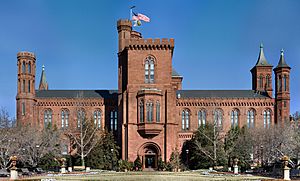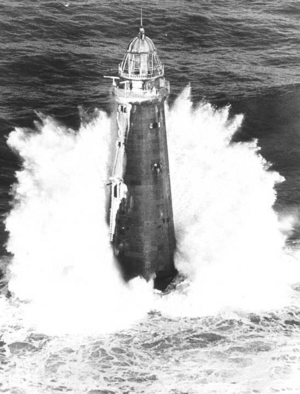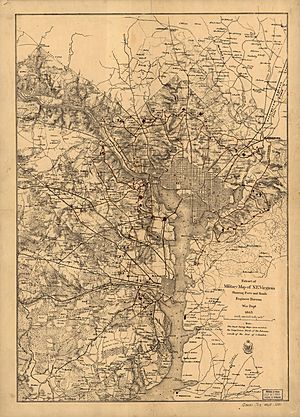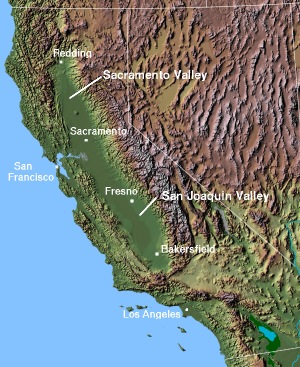Barton S. Alexander facts for kids
Quick facts for kids
Barton Stone Alexander
|
|
|---|---|
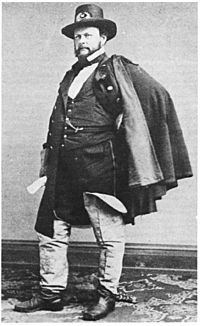
Brevet Brigadier General Barton S. Alexander, photograph date unknown
|
|
| Born | September 4, 1819 Nicholas County, Kentucky |
| Died | December 15, 1878 (aged 59) San Francisco, California |
| Place of burial | |
| Allegiance | United States of America Union |
| Service/ |
United States Army Union Army |
| Rank | |
| Commands held | Defenses of Washington, D.C. Pacific Military Engineering District |
| Battles/wars | Mexican–American War |
Barton Stone Alexander (born September 4, 1819 – died December 15, 1878) was a skilled engineer and a high-ranking officer in the Union Army during the American Civil War. He was a lieutenant colonel and the chief engineer for the defenses of Washington, D.C.. After the war, he was honored with the rank of brigadier general.
Alexander graduated from the U.S. Military Academy at West Point. He served in the Mexican–American War, where he built important forts to protect American supply lines. After this war, he helped design and complete famous buildings like the Smithsonian Institution Building in Washington, D.C. He also supervised the rebuilding of the challenging Minot's Ledge Lighthouse.
During the Civil War, he advised the Army of the Potomac's engineering team. He later became the main engineer in charge of protecting Washington, D.C. After the war, he moved to the West Coast. There, he led all military construction projects. He also played a key role in getting the U.S. government to acquire Pearl Harbor in Hawaii. He worked on many projects to bring water to dry lands in California.
Contents
Barton Alexander: A Life of Building and Service
Early Life and Training
Barton Alexander was born in Nicholas County, Kentucky. He started his studies at West Point in 1838. He was a very dedicated student. Even though he struggled with math at first, he worked hard and graduated seventh in his class in 1842.
From 1843 to 1848, he helped build forts along the East Coast of the United States. These included Fort Pulaski and Fort Jackson. In 1848, he joined the Mexican–American War as a second lieutenant. He built defenses to protect American supplies as General Winfield Scott's army moved toward Mexico City. After the war, he returned to West Point. He worked there for four years as the treasurer and engineer for the cadet barracks. In 1852, Alexander moved to Washington, D.C.. He helped design and build several important government buildings.
Building Famous Structures
One of his first projects in Washington, D.C., was the Scott Building. This building was part of the U.S. Soldiers' Home, which is now called the Armed Forces Retirement Home. General Winfield Scott donated money to start this home in 1851. The Scott Building was the main part of the complex and still stands today. It was built in a style called Romanesque Revival, using white Vermont marble.
The Smithsonian "Castle"
While working on the Scott Building, Alexander was asked to help finish the Smithsonian Institution Building. This project was moving very slowly. In August 1853, Alexander took over. By 1855, the Smithsonian Building was complete.
Alexander made a small but important change to the original design. He put the main lecture hall on the second floor. This made the sound better and created a larger space. To support this big hall, he added strong, fireproof columns made of iron and covered in stone. These columns proved their worth on January 24, 1865. A fire broke out on the roof, destroying the lecture hall. But thanks to Alexander's fireproof columns, the rest of the building did not collapse.
The Minot's Ledge Lighthouse
After his work on the Smithsonian, Alexander went to New England. He was assigned to a very difficult project near Boston harbor. This was the rebuilding of the Minot's Ledge Lighthouse. Many people thought it was one of the hardest projects the U.S. government had ever tried. The original lighthouse had been destroyed in a storm in 1851. Many ships were sinking on the dangerous rocks there, so a new lighthouse was desperately needed.
Alexander was put in charge of the lighthouse construction in April 1855. He changed the design to fit the tough conditions at the site. The lighthouse location was almost always underwater, except at low tide. So, the workers had to prepare the huge granite blocks and iron parts on a nearby island.
The work was very slow. Storms often hit the area, and everything had to be built away from the actual site. One powerful storm swept away much of the iron structure. Alexander was worried, saying, "If wrought iron won't stand it, I have my fears about a stone tower." But then he learned that a ship had hit the lighthouse, causing the damage. It wasn't just the storm. Work started again. The last stone was placed on June 29, 1860, five years after Alexander began. The lighthouse cost about $300,000, making it one of the most expensive in U.S. history.
Protecting Washington D.C.
After the lighthouse was finished in 1860, the American Civil War began. Alexander was able to use his engineering skills for military purposes again. On May 24, 1861, he joined other engineers who marched into Virginia. Their job was to build forts to protect Washington, D.C.. The capital city was located right between the Union state of Maryland and the Confederate state of Virginia.
In July 1861, Alexander found himself fighting as an infantry officer at the First Battle of Bull Run. This was common because the Union Army needed experienced officers. For his service in this battle, Alexander was promoted to major.
Engineering Brigade
After the defeat at Bull Run, the Union Army went back to defend Washington. Throughout 1861, the Army of the Potomac improved the defenses around the city. Two new regiments, the 15th and 50th New York Volunteer Infantry, were named "engineer regiments." Lieutenant Colonel Alexander was put in charge of training them. After their training, these two regiments became an "Engineering Brigade." Alexander stayed with this brigade as an assistant.
Alexander continued this role during the Peninsula Campaign. He often performed well under enemy fire. He was promoted to lieutenant colonel for his service at the Siege of Yorktown in May 1862. When the campaign ended, Alexander became an assistant to General John G. Barnard, who was the chief engineer for Washington's defenses. In March 1863, Alexander was promoted to major, while keeping his honorary rank of lieutenant colonel.
In August 1863, Alexander joined a group of military officers. Their job was to check Washington's defenses and suggest improvements. This group decided on the final number of guns and ammunition for the forts. This decision was important for the Battle of Fort Stevens eight months later.
Defending the Capital
On June 1, 1864, General Barnard left his position. This made Alexander the chief engineer for the defenses of Washington. He held this important role until after the war ended in April 1865. His main job was to maintain the forts. The Union Army was doing well, so Washington was not under major threat. The only exception was in July 1864, when Confederate forces attacked Washington's defenses from the north during the Battle of Fort Stevens.
After the war, Alexander oversaw the reduction of U.S. Army forces in Washington. He also supervised the closing down of many forts around the city. On May 9, 1865, he was told to stop maintaining the forts to save money. Alexander wanted to keep some forts ready for future needs. His suggestions were accepted, but he had limited funds and manpower.
By January 1866, there was no money to keep Alexander's offices open. On January 13, 1866, he closed his office. By July 14, 1866, all debts were paid, and his work on Washington's defenses was complete.
West Coast Adventures
On March 4, 1866, President Andrew Johnson nominated Alexander to be an honorary brigadier general. The United States Senate confirmed this on May 4, 1866. After closing his Washington office, he briefly worked in New England. He supervised repairs to forts and river improvements in Maine.
On January 7, 1867, he was ordered to the West Coast. He became the chief U.S. Army engineer for the entire Pacific Coast. He was promoted to lieutenant colonel on March 7, 1867. When he arrived, he visited places from Alaska to the Mexican border. He wanted to understand what engineering work was needed. Between 1868 and 1870, he surveyed many harbors in California. He suggested building a 7,000-foot breakwater in Long Beach. This made the harbor accessible to large ships. In 1870, he suggested that landowners near Colusa, California, build levees to control the Sacramento River. This plan would reclaim swamp land and prevent floods, making large-scale farming possible. Local residents were very excited about this idea.
Exploring Pearl Harbor
In the spring of 1872, Colonel Alexander and Major General John Schofield traveled from San Francisco to Honolulu. At that time, Hawaii was an independent country called the Kingdom of Hawaii. Their secret mission was to check Hawaii's ports for defense and trade.
They saw the great potential of Pearl Harbor. They called it a "harbor of refuge in time of war." On May 8, 1873, they suggested that the War Department acquire the harbor. Their idea led to a special treaty between the United States and Hawaii in 1875. As part of this treaty, Hawaii gave the area of Pearl Harbor to the United States. In return, Hawaii got trade agreements that helped its sugar farmers. The treaty was signed on September 8, 1876. This helped set the stage for the U.S. to eventually take over the Kingdom of Hawaii.
Helping California Grow
After returning to California, Colonel Alexander was chosen to lead a group appointed by the U.S. Congress. This group, known as the Alexander Commission, studied how to bring water to the San Joaquin Valley, Tulare Valley, and Sacramento Valley. They surveyed the California Central Valley throughout the summer and fall of 1873.
The Commission's report stated that large-scale irrigation was possible. It also said that much land could be reclaimed from the swamps around the Sacramento River. This report was the first professional study of the valley. It helped prepare the way for future development.
In 1874 and 1875, Alexander worked on a project to prevent the Mississippi River Delta from filling up with silt. This was important to keep the river open for ships. He even traveled to Europe to see how other countries solved this problem. At the end of 1875, the state of California asked Alexander to look at a proposed irrigation project in the San Joaquin Valley. Since he was busy, Alexander assigned an associate, William Hammond Hall, to lead that project.
Barton Alexander died in San Francisco, California, on December 15, 1878, at age 59. He was buried in the San Francisco National Cemetery.
|


